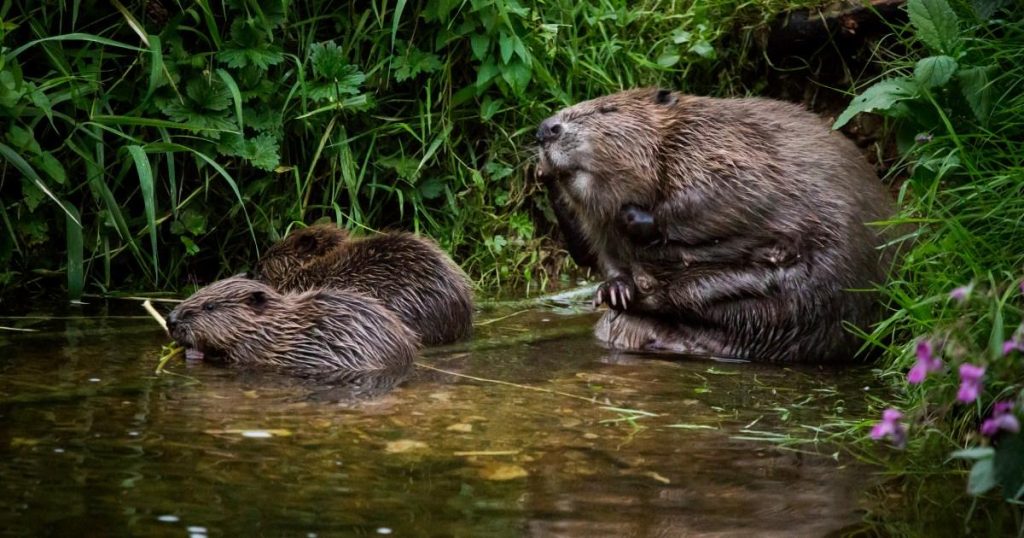The industrious nature of beavers has outpaced bureaucratic processes in the Brdy region of the Czech Republic, resulting in a remarkable feat of natural engineering. A family of European beavers constructed several dams overnight, effectively completing a water retention project that had stalled in administrative limbo for weeks. The beavers’ handiwork not only saved the Czech government an estimated £900,000 (CZK 30,000,000) but also provided a crucial boost to the area’s protected wetland habitats. The Brdy Protected Landscape Area (PLA) Administration had been struggling to secure permits and funding to address a bypass gully in the Klabava River, a drainage issue that was depleting vital water resources from the wetlands. The beavers’ timely intervention, however, rendered the planned human construction redundant, showcasing nature’s efficiency and innate understanding of hydrological dynamics.
The bypass gully in the Klabava River had become a focal point of concern for local environmentalists. The drainage it caused was detrimental to the sensitive wetland ecosystem, threatening the survival of various species that rely on these waterlogged areas. The Brdy PLA had recognized the urgency of the situation and sought to mitigate the issue through a revitalization project involving the construction of a dam. However, the project was mired in bureaucratic hurdles, including obtaining the necessary building permits from multiple local authorities. As the project faced increasing delays, the beavers stepped in, demonstrating the power of nature to provide solutions where human endeavors falter. Their construction of a dam on the very bypass gully that had caused so much concern effectively addressed the drainage issue, highlighting the beavers’ intuitive understanding of the landscape and their role in shaping it.
The beavers’ dam has not only solved the immediate drainage issue but has also created a thriving wetland environment. The newly formed wetland provides ideal conditions for a variety of species, including the rare stone crayfish and various frog species. The dam effectively retains water, ensuring the sustained hydration of the floodplain and creating a vibrant ecosystem. The beavers’ contribution goes beyond the financial savings; it represents a significant ecological victory, demonstrating the effectiveness of natural processes in restoring and maintaining environmental balance. This natural solution proves both more efficient and arguably more harmonious with the existing ecosystem than any human-engineered alternative.
The timing of the beavers’ intervention is particularly noteworthy. Just as the Brdy PLA’s project appeared to be indefinitely stalled, the beavers arrived and swiftly executed their own solution. This underscores the beavers’ inherent understanding of hydrological needs and their ability to identify optimal locations for dam construction. Experts in the field acknowledge the beavers’ uncanny ability to choose the most effective sites for their dams, often surpassing the precision of human-designed plans. The beavers’ work exemplifies the wisdom of nature and the potential for natural solutions to address environmental challenges.
Beyond the main dam on the bypass gully, the beavers have also constructed several smaller dams along other stretches of the Klabava River. These dams contribute to the overall health of the river ecosystem by creating a series of interconnected wetlands. Beavers are known for their dam-building prowess, a behavior driven by their need for safety and access to food. They create these structures by felling trees and branches with their powerful teeth, interweaving them with mud, stones, and grass to form robust barriers. These dams not only provide them with deep water for protection against predators but also create a network of channels and ponds that facilitate their movement and access to food resources.
The beavers’ unexpected contribution in the Brdy region highlights the vital role these animals play in shaping and maintaining healthy ecosystems. Their dam-building activities can provide a range of ecological benefits, including water retention, flood mitigation, and habitat creation for a variety of species. The incident serves as a reminder of the interconnectedness of natural systems and the potential for synergistic interactions between human activities and natural processes. The beavers’ success in Brdy emphasizes the importance of incorporating natural solutions into environmental management strategies, recognizing the inherent wisdom and efficiency of the natural world. It also underscores the need for flexibility and adaptability in human planning, acknowledging that nature sometimes provides the most effective and economical solutions.











